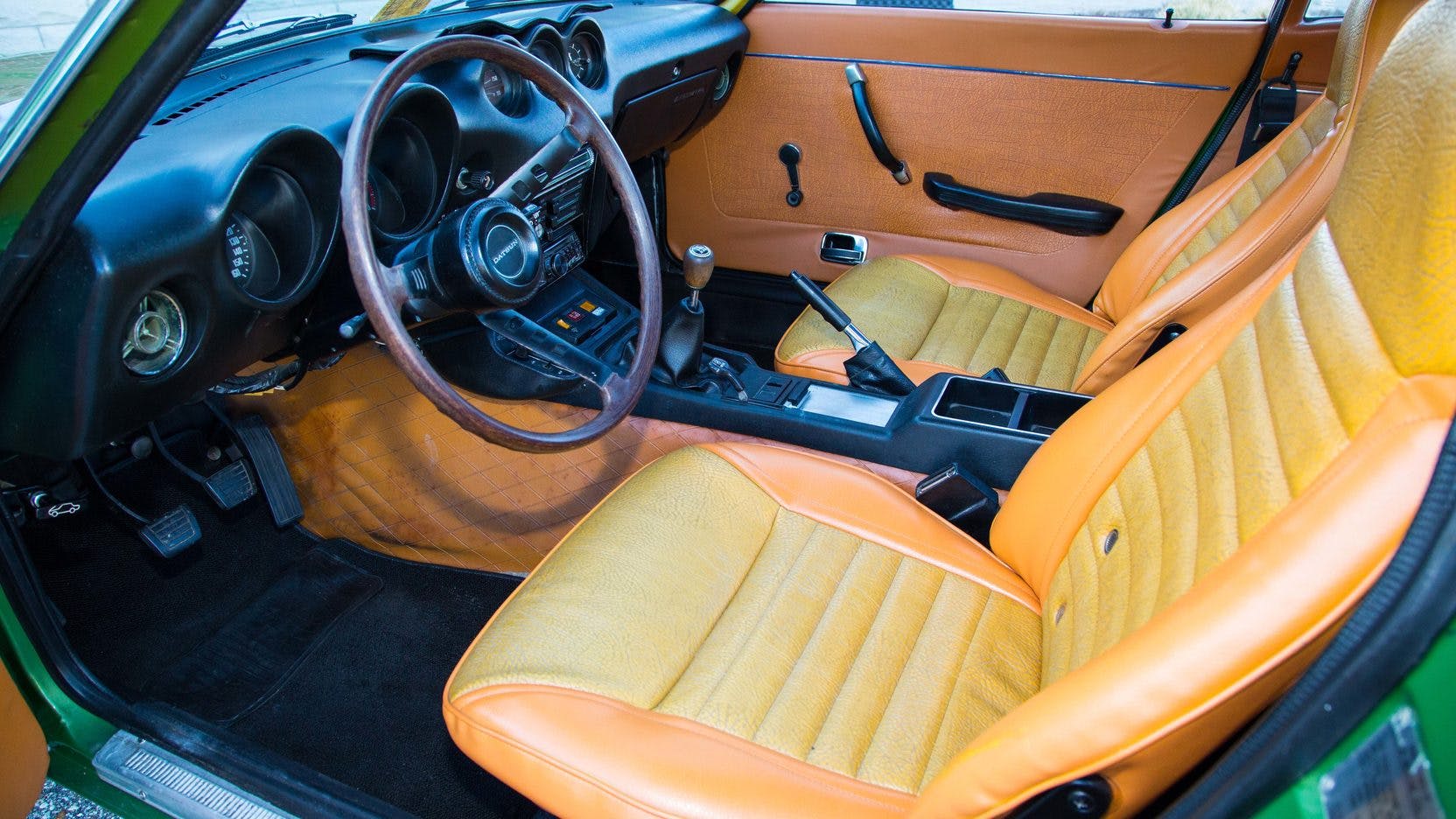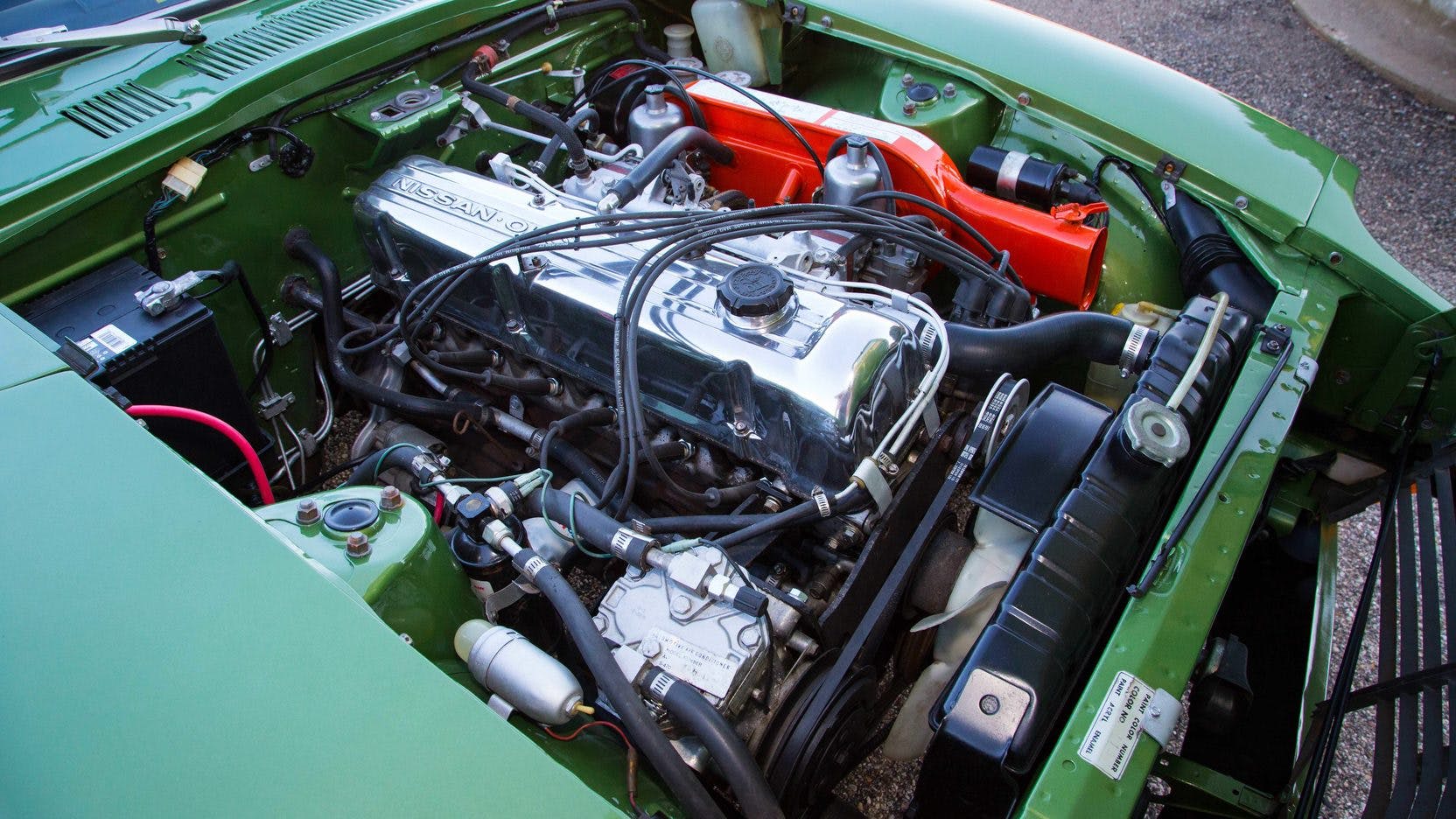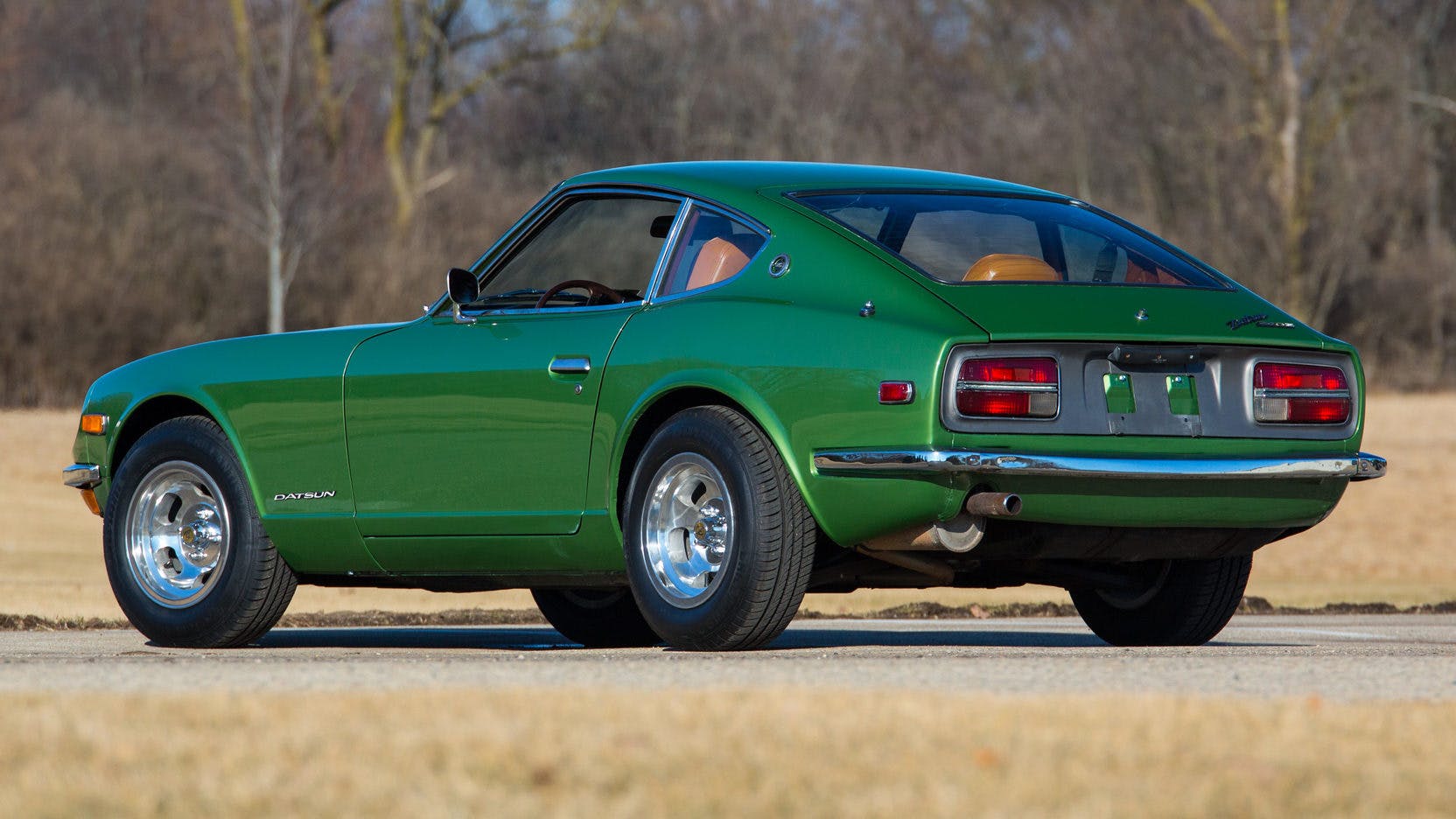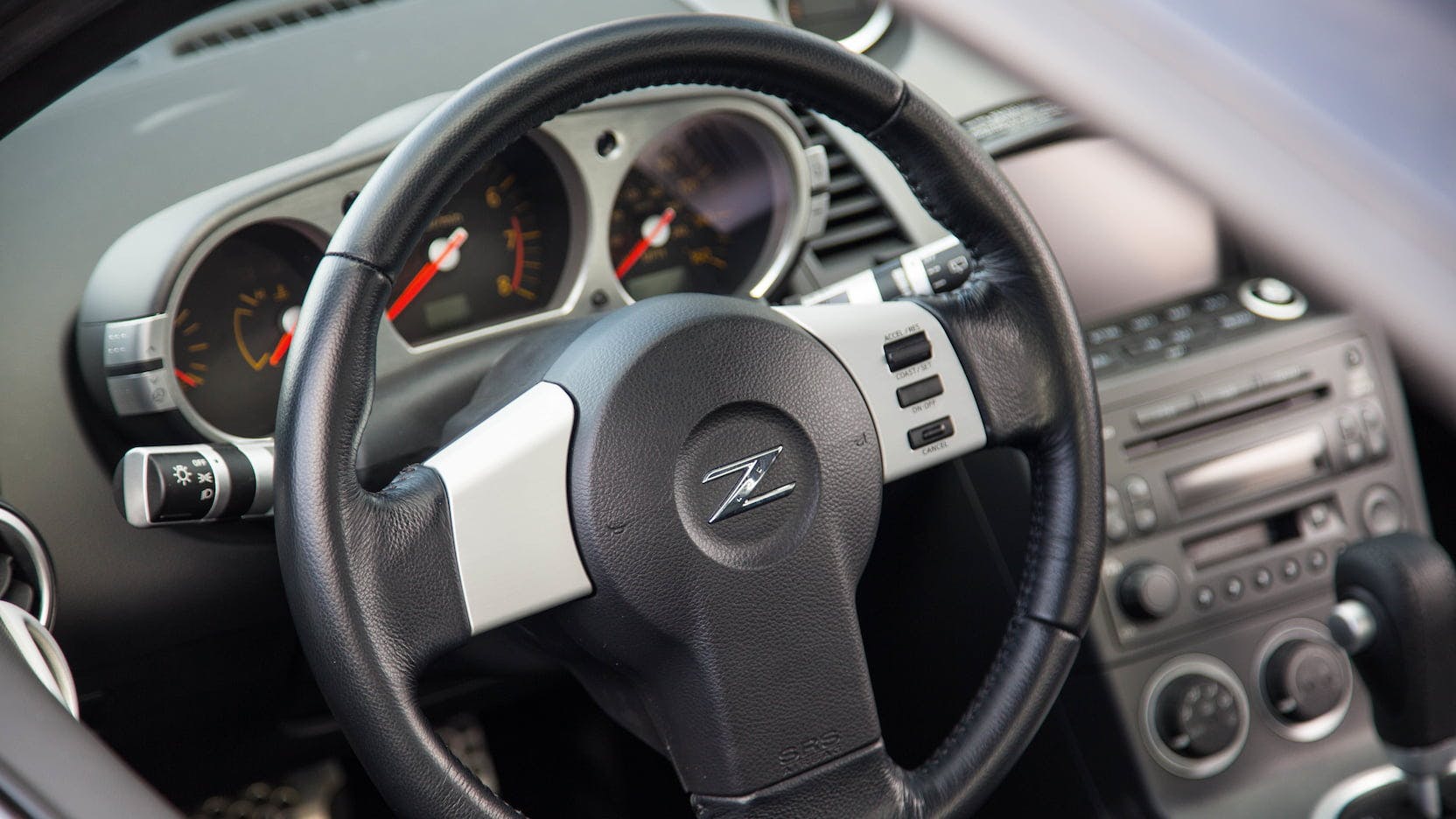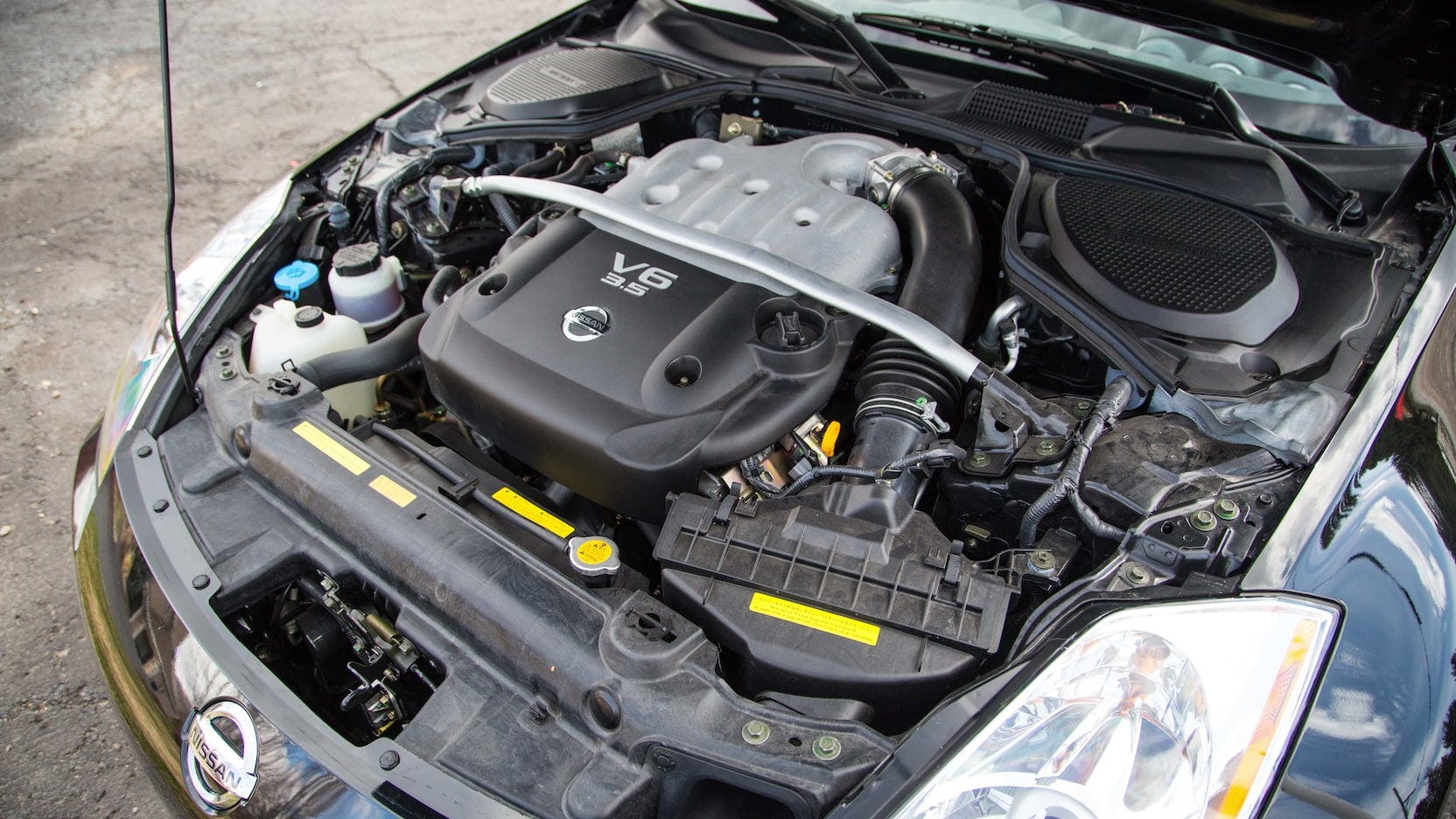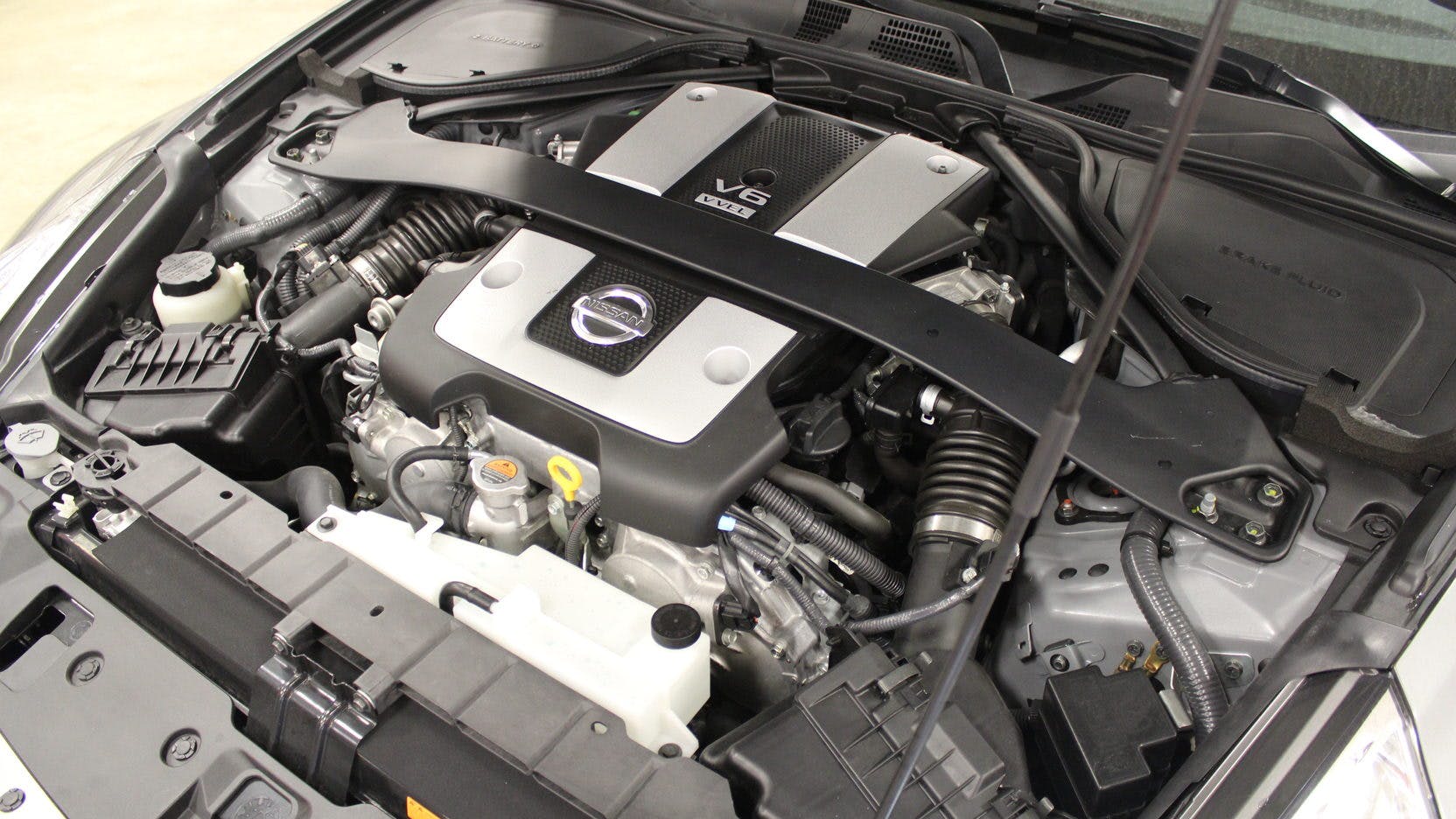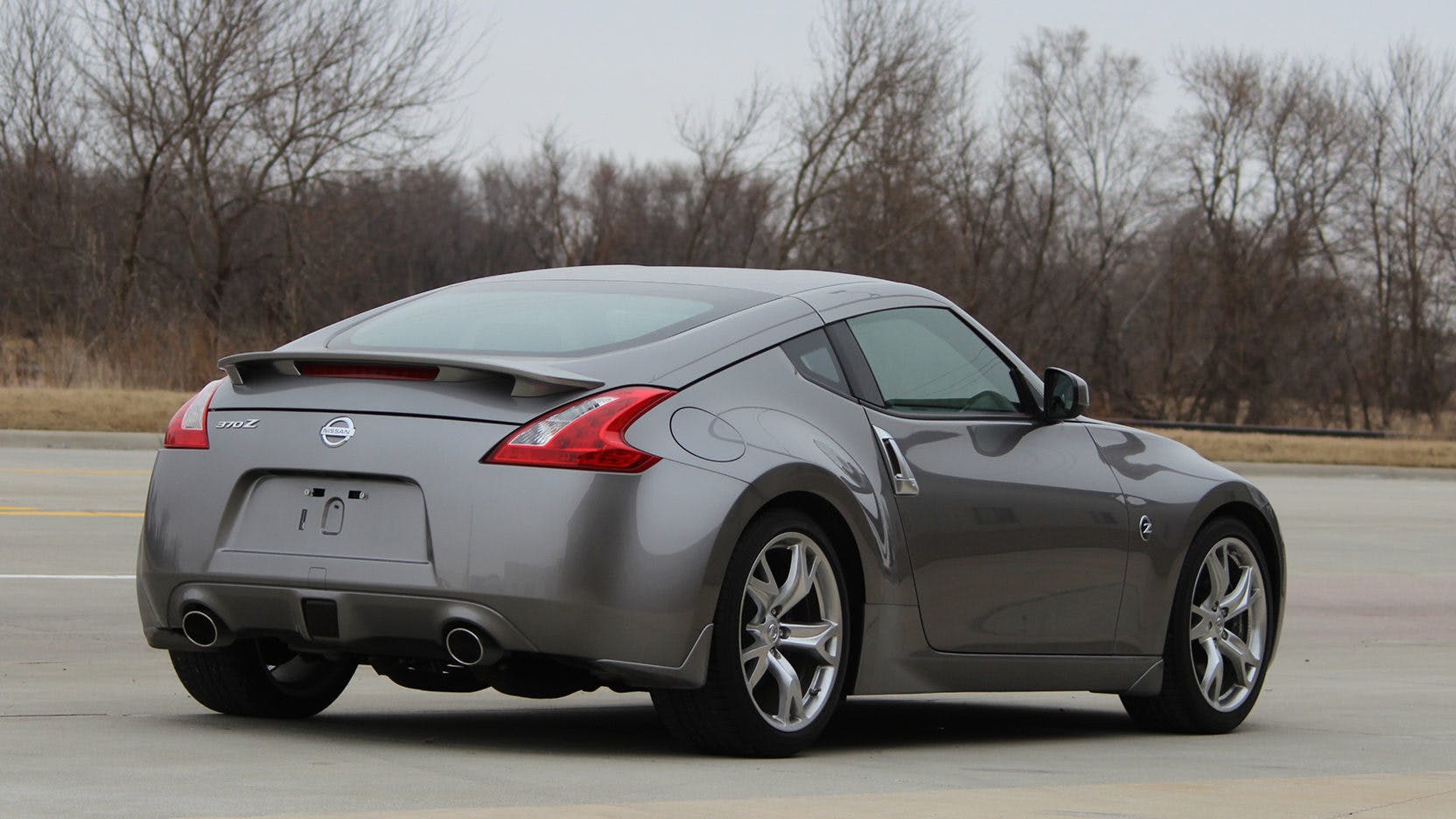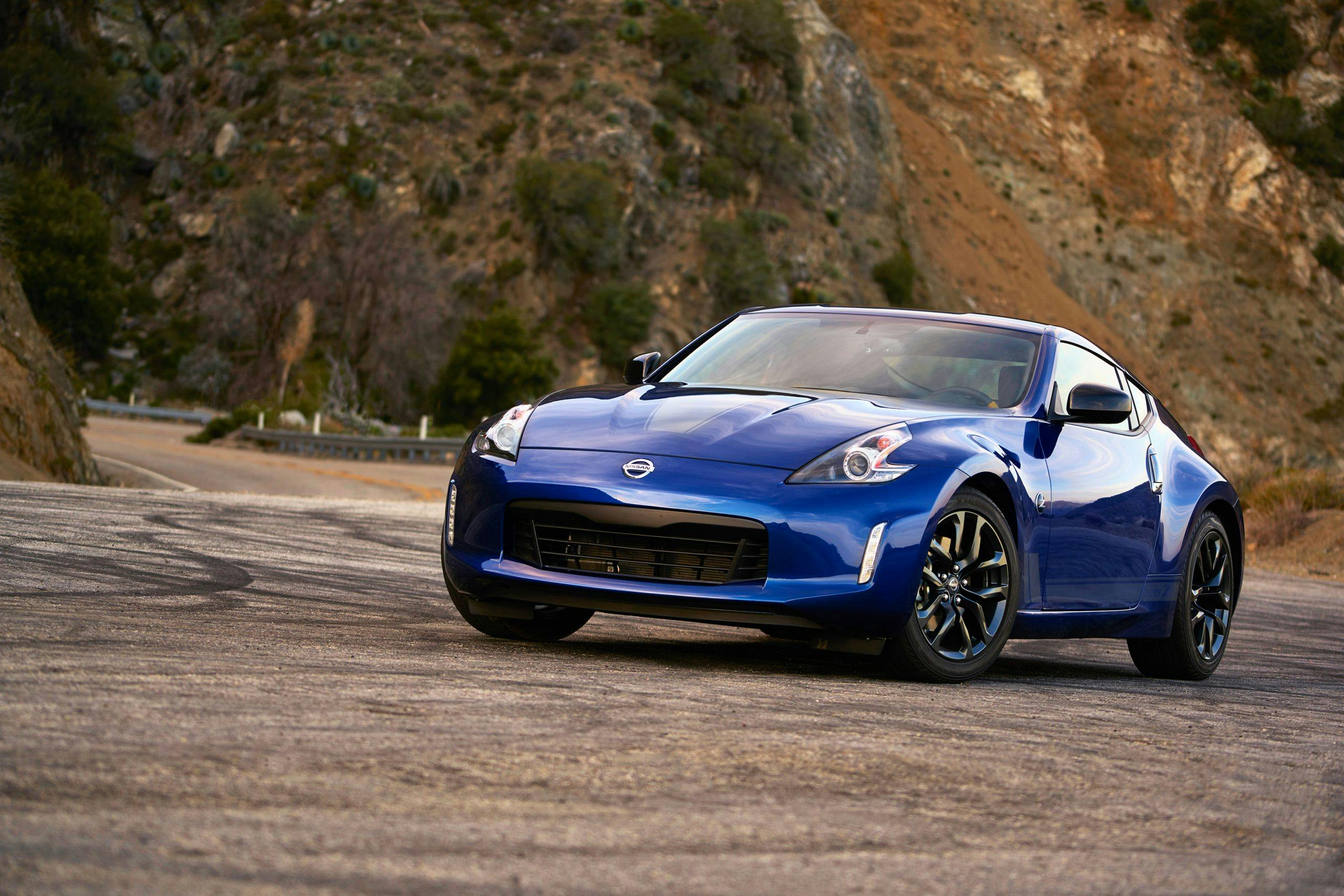Media | Articles
Nissan Z values through the generations
When the first 240Z was sold to the American public in October 1969, it instantly created a cult following. Some of the most ardent Z-car disciples of today are willing to spend loads of money to get their hands on the best possible examples. Earlier this year, a 1971 Datsun 240Z in perfect survivor condition sold for a mind-boggling $315,000 after premiums.
Soon, there will be a new Z to obsess over. When a heritage model like this arrives in fresh form, many enthusiasts look back at previous generations wondering if this is a good time to snatch one up, perhaps to keep the new car company in the garage. Owning two or more Z-cars is especially common among owners. According to Hagerty insurance policy data, Z drivers are more likely to own another Z-car than any other collector vehicle.
The Nissan Z lineage goes back over 50 years, through several generations and many mid-model revisions. Here’s a breakdown of their prices so you can find the right Z in your budget.
1970–1978 Datsun 240Z/260Z/280Z (S30)

Nothing tops the original.
The Datsun 240Z was hot from the moment it was new. Automotive journalists praised the 240Z’s performance, which rivaled that of much more expensive sports cars of the day. The American public loved the sleek design and the affordable price, which Datsun strategically placed within $200 of the MGB GT. The 240Z was one of the cars that made the American public finally take Japanese cars seriously, helping shed the gutless econobox reputation. All JDM car lovers (your author included) should thank the 240Z for paving the way.
Marketplace
Buy and sell classics with confidence
Greatness, however, often comes at a price. Even though Datsun sold over 150,000 240Zs, these days they are increasingly being treated like rarities. It’s not just the 240Z, either. Values for all early Zs have been skyrocketing, even less desirable versions like the 260Z 2+2.
Since September 2017, the average value for an Excellent (#2) condition 1970 Datsun 240Z increased 41 percent from $35,200 to $49,800. In that same time, values of the 260Z and 280Z reached what a 240Z levels from three years ago. Since 2017, a 260Z in Excellent (#2) condition has increased 95 percent from $15,400 to $30,000, while a similar-condition 280Z rose 64 percent from $19,600 to $32,100 over the same time period.
The S30 generation holds the record for most expensive Nissan Z ever sold, although the model was never offered in the U.S. A 1970 Fairlady Z432R sold for an astonishing $805,700 back in January 2020. Nissan made less than 50 Z432Rs, all powered by the same S20 inline-six from the “Hakosuka” Skyline GT-R.
The 260Z and 280Z both offered a 2+2 version, a feature that would appear on the next three Z generations. For the 2+2, Datsun stretched the wheelbase an extra foot and extended the roofline, resulting in a slightly funky profile and roughly an additional 200 pounds of curb weight. The 2+2 variants are historically less desired by collectors and values reflect that; a standard 260Z in Excellent (#2) condition is currently worth 45 percent more than a 260Z 2+2 ($30,000 vs $20,600) on average. But that’s not to say the 2+2 hasn’t seen growth. Since 2017, the value of an Excellent (#2) condition 260Z 2+2 has increased 76 percent.
The S30 generation is universally loved. Using Hagerty insurance quotes as a sign of buying intent, millennials show the most interest, accounting for 43 percent of quotes. Older generations follow close behind with Gen X and boomers representing 23 and 30 percent of quotes, respectively. Values are likely to remain high as fans of all ages flock to the S30 Z.
Every successive generation of Z ends up being compared to the original 240Z, which is why it will always be held in high esteem.
1979–1983 Datsun 280ZX
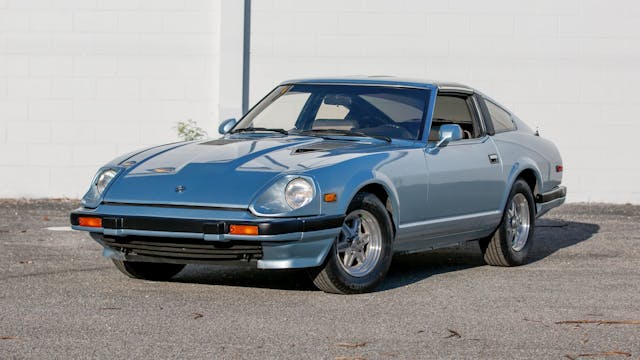
Introduced in late 1978, the 280ZX was the first complete redesign in the Z lineage. The only components carried over from the S30 generation were the L28 engine of the 280Z and its five-speed manual transmission. The 280ZX is where we started to see the Z transform from pure sports car to grand tourer.
Design efforts focused more on driver comfort and styling and less on driving sensation. When designing the body, extra effort went into aerodynamics, which resulted in much less air turbulence and greater stability at high speeds compared to the S30. Something had to be done to give the Z the power it needed to take advantage of its high speed stability. Enter the turbo.
In 1981, Nissan turbocharged the 2.8-liter inline-six for an impressive 180 horsepower and 203 lb-ft of torque. The torque figure was so high that Nissan was afraid it would break the car’s five-speed manual, so all Turbo models were automatic until 1982 when Nissan sourced a stronger five-speed unit from Borg-Warner. Before you scoff at the three-speed torque converter, remember that it was actually quicker than the manual. Period tests showed that the 280ZX Turbo with a manual had a 0-60 time of about 7.4 seconds, while the automatic was capable of a 7.1 second run—quick in those days. For comparison, the Ferrari 308 GTS took 7.9 seconds to reach 60.
The Turbo model is what collectors want. An Excellent (#2) condition 1983 280ZX Turbo is currently worth 38 percent more than the naturally aspirated model ($20,900 vs $15,200).
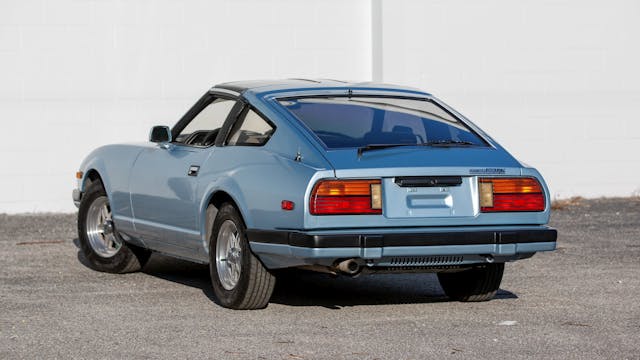
The 280ZX was praised in its day, even winning Motor Trend’s “Import Car of the Year” in 1979, but it hasn’t caught on as a major collectible in the way earlier Zs have. Since the 280ZX put a greater emphasis on luxury appointments than past Zs, it’s often overlooked by enthusiasts who prefer a more driving-focused approach. Even though they share powertrain, a 1978 Datsun 280Z in Excellent (#2) condition is worth almost twice as much as a 1979 Datsun 280ZX ($32,100 vs $17,800) on average.
Recently, we’ve seen the 280ZX gain momentum in the market, possibly because the T-tops, velour interior, digital dash, and two-tone paint options make it a perfect time capsule of the 1980s. All body styles and engine combinations have been on the rise. Excellent (#2) condition values increased an average of 17 percent in the last year alone. The 280ZX has wide appeal across age demographics. Even members of the Greatest Generation like Paul Newman loved them, who famously raced a 280ZX through the 1980s.
1984–1989 Nissan 300ZX (Z31)

The 300ZX debuted in 1984 and was Nissan’s third clean-sheet design for the Z. The 300ZX wore the Datsun marque for only the first year. From 1985 on, the company would be called Nissan in America. Again, like the 280ZX, this car was considered more of a GT than a pure driver’s car.
The 300ZX was the first Z to stray from the inline-six. It featured Nissan’s new 3.0-liter VG30 V-6, Japan’s first mass-produced engine in this configuration. Like the 280ZX prior, the 300ZX also had a turbocharged version that is highly sought after. The 205 horsepower 1989 300ZX Turbo in Excellent (#2) condition typically sells for a 46 percent premium over a comparable the 165-hp naturally aspirated model ($19,400 vs $13,300). The 300ZX had marginally better performance over its older sibling, as a 300ZX Turbo could hit 60 mph in 7.3 seconds—one-tenth faster than the 280ZX Turbo. This slight performance advantage is reflected in their values. A 1984 300ZX Turbo in Good (#3) condition typically sells for around $8300, where a 1983 280ZX Turbo in similar condition can be picked up for $7900.
Throughout its six-year run, the 300ZX received many styling and mechanical changes. Most notably, both engines gained an additional 5 horses for 1988 and 1989 thanks to redesigned internals and an increased compression ratio. As you might expect, collectors want the later, higher-output models. Post-revision 205-hp 1988 Turbos in Excellent (#2) condition sell for an average of 12 percent higher than pre-revision 200-hp 1987 Turbos ($19,400 vs $17,300).
1990–1996 Nissan 300ZX (Z32)

In 1990, a new model of the 300ZX debuted, internally coded Z32. The engine was based on the same 3.0-liter VG-series V-6, now featuring dual-overhead camshafts and variable valve timing. Twin Turbo models added dual Garrett turbochargers and intercoolers, which Nissan managed to squeeze into an already tight engine bay thanks to CAD software. The VG30ET engine was capable of making serious power: 300 hp and 283 lb-ft of torque in the production Twin Turbo and nearly 1000 horsepower in the GTP race car.
Nissan didn’t hold anything back designing its new Z, and the commitment paid off. The redesigned 300ZX was hailed in its day, making Car and Driver’s 10Best list all seven years the car was in offered in America. Nissan was proud of its work and put a lot of money behind promoting it. The 300ZX Twin Turbo was featured in a 1990 Super Bowl commercial directed by Ridley Scott. It only aired once and was pulled after Nissan execs thought it promoted street racing. In more recent memory, Nissans have been used repeatedly across the Fast and Furious movie franchise.
Like all Zs since the 260Z, a 2+2 variant was offered, but this time the wheelbase was stretched only 4.7 inches, making the two cars more visually aligned than in the past. To quickly spot the difference look at the fuel door—it’s in front of the rear wheel on the two-seater and behind on the 2+2. The value gap for the two variants are much closer for the Z32 than previous Zs. Only 17 percent separates an Excellent (#2) condition 1990 300ZX and its 2+2 counterpart ($12,100 vs $10,300).
In 1993, for the first time ever, a convertible Nissan Z hit the scene. Drop-top 300ZXs sell for less than coupes, but not by much. The average value for a 1993 300ZX Convertible in Good (#3) condition is $6500, while a 1993 coupe sells for around $7200. Both 2+2 and convertible body styles were only offered with the 222-hp naturally aspirated 3.0-liter V-6.
Values have been relatively flat the last few years for all Z32 models except the 300ZX Twin Turbo. The average value for an Excellent (#2) condition 300ZX Twin Turbo has increased 53 percent since 2017 from $17,600 to $27,000. Interest in the 300ZX isn’t slowing down anytime soon. In the last quarter, price lookups on Hagerty Valuation Tools for the Z32 outpaced all earlier Z-cars. The only Z generation to attract more attention was the 350Z, showing that enthusiasts are starting to look toward newer Zs while they are still reasonably priced.

While many Z owners tend to own another Z from a neighboring era, 300ZX owners are just as likely to own a first-generation S30 Z as they are to own a later 350Z or 370Z.
The 300ZX departed America after the 1996 model year. Several factors resulted in the Z’s premature demise in our market, but the market trend toward SUVs and exponential growth of the 300ZX’s price were major drivers. When it was released in 1900, the 300ZX Twin Turbo was priced at about $30,000, but only six years later that price grew to nearly $50,000. Nissan marked the Z’s exodus with Commemorative Edition run of the final 300 units shipped to America. These special editions are highly collectible, and one sold for close to $100,000 earlier this year.
Hiatus

After the 300ZX was pulled from the U.S. in 1996, there was a six-year gap when no Z was available here. To keep up public interest in the Z, Nissan launched the Vintage Restoration Program in 1998. The plan was to purchase original 240Zs, restore them to new condition, and resell them at dealerships for about $24,000 (or what they sold for when new in 1970 adjusted for inflation).
Demand wasn’t very high and Nissan only managed to complete 37 cars, according to the Vintage Z Car Register. If you were one of the lucky few to buy one, you did well investment-wise. Now, these factory restored 240Zs sell for north of $100,000.
2003–2008 Nissan 350Z

A Z for the new millennium was finally released in August 2002. Trying to correct the mistakes of the 300ZX, Nissan set the goal of a $30,000 base price and actually ended up well below that. Prices started at $26,000, which was an incredible deal for the performance.
Gone were the turbos for the first time since the original S30 Z. Nissan was now abiding by the rule of “no replacement for displacement.” At launch, the naturally aspirated 3.5-liter VQ35DE V-6 produced 287 horsepower and 274 lb-ft torque, good for a 5.4 second 0-60 time. In 2005, this engine was given a “Rev-up” tune with variable exhaust valve timing and different internals to increase the redline to 7000 rpm and produce 300 hp while sacrificing torque to 260 lb-ft. In 2007, the engine was replaced with the VQ35HR which was redesigned with an even higher 7500-rpm redline to produce 306 horsepower and 268 lb-ft. The 2007-2008 350Zs have a slight bulge in the hood to accommodate the higher deck of the HR engine and a revised transmission.
As you’d expect, there’s more demand for higher horsepower cars. On average, an Excellent (#2) condition 306-hp 2008 base model sells for for $11,600 whereas a 2003 base model with 287 hp is slightly less at $10,900.
In 2007-2008, a Nismo edition arrived with special bodywork, hand-welded structural seams, a tuned suspension, and other branded add-ons. These track-oriented 350Zs are the most valuable. The average value for an Excellent (#2) condition 2008 350Z Nismo is $19,500, 68 percent higher than the base model.
The 350Z was a dedicated drivers car, and no 2+2 version was offered for the first time since the 240Z. A convertible model was released in 2004 model year, and these cars carry a slight premium over the coupe. A 2004 convertible in Good (#3) condition can be picked up for $7900, where a similar coupe goes for $6500. Tough to go wrong at that price.
2009–Present Nissan 370Z

In 2009, a full three years before “Gangnam Style,” Nissan introduced the 370Z. This model has been in production for well over a decade and will continue until the new Z is released. The absence of a center touchscreen is the most noticeable indicator of the car’s age.
Now powered by a naturally aspirated 3.7-liter VQ-series V-6, output was increased to 332 horsepower and 269 lb-ft. A Nismo version offers 350 horsepower and 276 lb-ft of torque as well as Nismo-specific bodywork. The base 370Z was good for an official 5.1 second 0-60 time.
The six-speed transmission in the 370Z was the first production manual gearbox that featured automatic rev-matching on downshifts. The car’s computer automatically blips the throttle to match engine and transmission speeds during downshifts, eliminating the need for heel-toeing.
If 370Z owners are going to own another Z, it’s likely to be a 300ZX. Their collections typically don’t go earlier than the 1980s, as their other favorite cars are the Porsche 928 and 944 Turbo.

The 370Z is still in its new/used car phase, so it’s hard to tell how this model will age as a collector car. (The Z roadster was discontinued for 2020.) The clean design, robust engine, and long model run will ensure the 370Z will be a worthy performance value for the next few decades.









